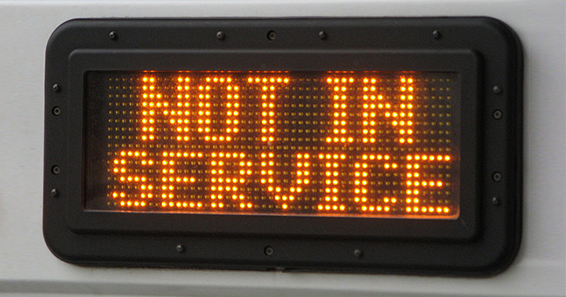What Service is Not Available?
Inter-Facility Transfers
This week’s blog will focus on inter-facility transports.
For the most part, we’ll discuss hospital-to-hospital transfers where the patient has been treated at one hospital but must move to a different hospital in most cases for care that is not provided at the facility where they currently are located.

Community Hospitals
We find, as we read our client’s Patient Care Reports (PCRs) that these EMS scenarios many times originate at a community hospital- a local facility equipped to handle emergencies and provide basic care many times to the point of even stabilizing a patient experiencing a medical emergency, but not equipped to further care for the patient’s specific needs.
While in every way defined as a hospital, even with inpatient beds, but focused on providing basic care minus specialties or critical care capabilities.
Once the patient is stabilized or possibly the patient’s overall status worsens and becomes more critical, it’s at this point that the patient’s condition warrants the transfer of the patient using an ambulance with equipment and personnel who can provide trained monitoring to safely transport the patient to a second facility better equipped to properly provide the specialized care needed.
Remember, for Medicare, Medicaid and most insurance payers to reimburse the EMS agency for these transports there must be documentation in the PCR describing the transport while noting the patient’s condition clearly warranted the need for a higher level of care.
Be Specific!
The PCR must be specific.
The documentation in the PCR must clearly and precisely indicate what service is not available at the first or sending facility that is available at the second or receiving facility. It’s quite simple, but cannot be vague.
Consider these examples…
The right way – Patient presented suffering a STEMI. Interventional cardiac catheterization is not available at Hospital A requiring this patient to be transported by ambulance to Hospital B where cardiac catheterization is available
The wrong way – Dispatched to Hospital A for an inter-facility transport. Patient suffered a heart attack and required transport by ambulance for higher level of care.
Comments – The first example was precise and left no doubt as to the reason for the transport. The second example is vague and did not adequately describe why the patient must leave a fully accredited hospital to be transported to another hospital. If the documentation in the second example was all that the PCR contained, your billing office should be raising many red flags and asking you for clarification before creating the claim and billing the payer for reimbursement.
Here’s another comparison…
The right way – Patient presented in the emergency department at Hospital X having suffered a left-sided pelvic fracture following a fall at home. Patient was treated to control the pain. Hospital X has no orthopedic surgeon on staff requiring transport to Hospital Y for treatment, evaluation and possible surgery by an orthopedic surgeon.
The wrong way – Patient presented in the emergency department at Hospital X with a pelvic fracture following a fall at home. Patient was treated to control the pain. Patient loaded in ambulance and transport to Hospital Y for treatment of the fracture.
Comments – Again, note the contrast in the two examples. The first example is specific regarding the injury, what care was provided at the first hospital and what care cannot be provided and is available at the second hospital. The second example leaves the open question as to why the first hospital was unable to properly care for and stabilize the fracture. The second example leaves doubt in the mind of the reader of the PCR as to the need for the ambulance service.
Time Well Spent!
When EMS providers take just a little extra time to add specific details to the PCR, the result can mean reimbursement dollars flowing faster and easier. Any time the ambulance billing office can file a claim to the payer with supporting documentation the billers are confident will support the claim, it makes everyone’s job easier. Today is the day to encourage your agency’s providers to collect concise, specific information and add that information to a fully-descriptive end-product PCR. When providers are consistently meeting these expectations, cash flow will be obtained regularly supporting your EMS agency’s mission financially.
